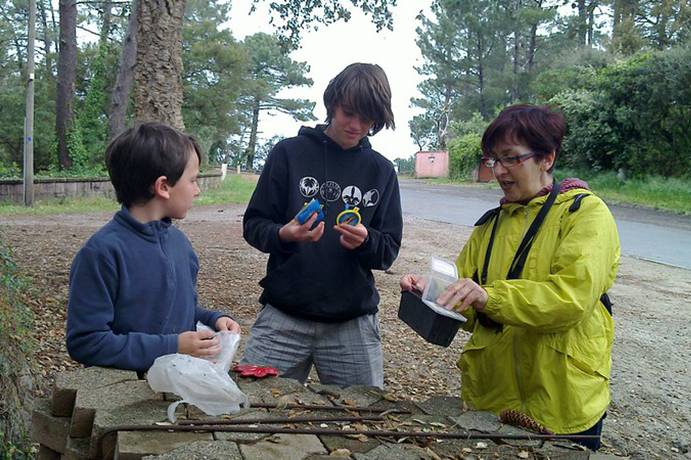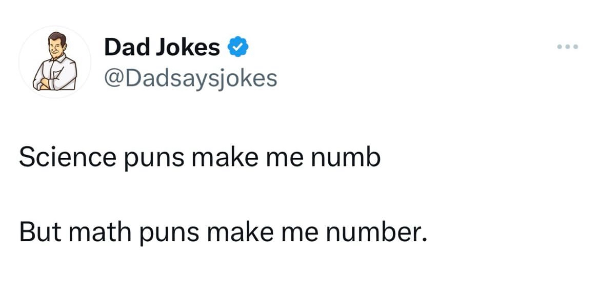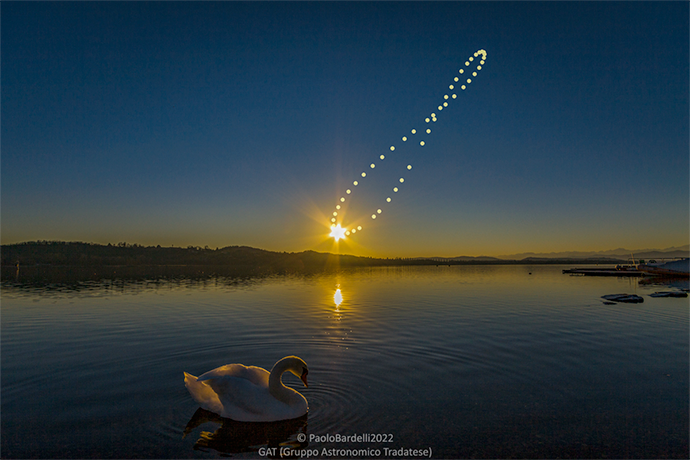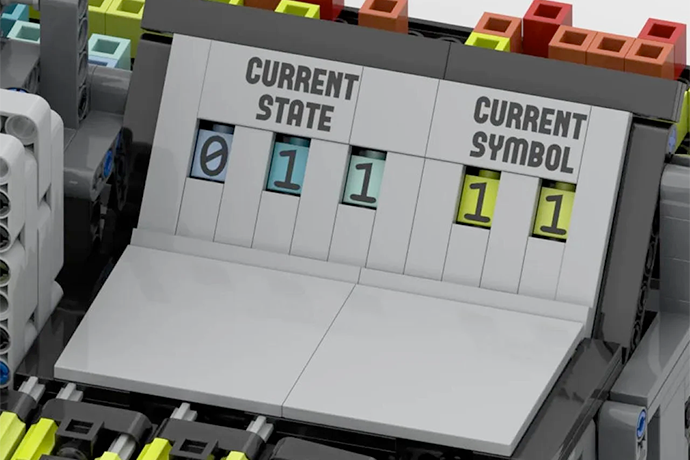1.10.1 🐇🐇 Geocaching, 3D Printing, Moon Rabbits, What's that bird?

Welcome, hope y0ur Wednesday is going alright for you. This week's email has another fun summer STEM/STEAM project for kids and their adults: geocaching. You use a phone and GPS to find objects hidden in plain sight that are all over the world. I still get emails telling me someone has found two caches I found on a trip years ago in New Hampshire. Maybe geocaching would interest you, too.
Researching and writing this email I also stumbled on moon rabbits. Turns out that many cultures believe (or believed) the moon had rabbits. Who knew? There's a few more links that might interest you, as well. Let's get started...
Summer Projects: Geocaching
It's hard for me to say what's best about geocaching. It gets people outdoors to solve an interesting problem using technology. Kids can learn about maps and finding their way with maps. With friends and family as a group, it also can be a fun and amusing exercise. And it's a different way to see the world around us.
In its simplest form, geocaching is a real world treasure hunt using a phone with GPS, which most people have, along with an internet connection. You go to the Geocaching website, type in your location, and then use your phone GPS (or GPS device) to try and find nearby caches. The caches are usually small containers. Some have paper and pen or pencil to write down your website username when you find the cache. Some caches have tiny toys and you can leave toys. And you can report your finds on the website. The Geocaching for Absolute Beginners video linked below I highly recommend because it describes and shows the process.
Using the Geocaching website, it's also amazing how many caches are hidden around us, especially in urban areas. When you travel, you can use the website to have fun looking for nearby caches. There is a geocache trackable on Mars but likely that's impossible to visit. But you can add it to your list of items found.
And if you're really into geocaching, there's nothing to stop you from creating caches and reporting them on the Geocaching website.
Geocaching Website
https://www.geocaching.com/play
https://www.geocaching.com/sites/education/en/
https://www.youtube.com/embed/vuFiLhhCNww
Geocaching for Absolute Beginners
https://www.youtube.com/embed/gaSkHrAlhGE
Geocaching
https://en.wikipedia.org/wiki/Geocaching
Geocache on Mars
https://kidscodecs.com/mars-perseverance-trackable/
What's that Bird?
"You go for a walk and see a bright red cardinal. The app called eBird wants to know about it. You open your phone, set the place where you are walking, and type in the name of the bird and how many see.
Cardinals are easy. The males are bright red and have very distinctive head shapes. But what happens if you see a bird that you don’t know? eBird offers a link to a program called Merlin where you walk through a series of questions so you can identify the sparrow, goose, hawk, or whatever it is.
With your observation recorded, you join the legions of birders with life lists of birds seen.
But this free app, created by the Cornell Laboratory of Ornithology,is more than just a note-taking system. Because you share your observations, other people can go to the same spot and maybe see the cardinal you saw. You can plan your walks by what birds other people saw. And, last but certainly not least, you can help conservation efforts simply by recording what you saw."
What’s that bird?
https://kidscodecs.com/ebird-app/
How to use e-Bird
https://www.audubon.org/news/how-use-ebird
https://www.birds.cornell.edu/landtrust/how-to-use-ebird/
E-Bird hot spots
https://evergreenaudubon.org/nature-conservation/local-birding/ebird-hotspots-cool-spots-and-notspots/
Are there rabbits on the Moon?
Native American, Chinese, Japanese, Mayan, Egyptian, and other cultures say yes, a rabbit lives on the moon. In Japan, they believe the rabbit makes mochi, a mashed up sticky rice treat. Chinese and other Asian cultures celebrate a jade or moon rabbit in the Mid-Autumn festival, on the 15th day of the 8th month in a lunar calendar, a day when the moon is most round.
Many cultures noticed that, when looking at full moon, you can see the outline of a rabbit with its long ears. It looks like it is pounding on a pestle, a tool for grinding spices or food. Seeing a rabbit on the moon is like seeing faces or other objects in the clouds as they pass by. It's an example of pareidolia, seeing something we're familiar with in something that otherwise has no such significance.
What's also interesting is that the shape of the rabbit on the moon, and its pestle, is made of dark lunar material. They're called seas, maria in Latin, although obviously there's no water on the moon. Instead, the dark material is made of lava from 4.2 and 1.2 billion years ago. The lava happened to spill then solidify into a shape we recognize as a rabbit. When Apollo 11 astronauts were on the moon, they also were asked by Mission Control to look out for "a lovely girl with a big rabbit," to confirm the legends. Unfortunately, they didn't find either.
Tales From Japan: The Rabbit on the Moon
https://www.bokksu.com/blogs/news/japanese-folktale-rabbit-on-the-moon
Moon Rabbit
https://en.wikipedia.org/wiki/Moon_rabbit
Pareidolia
https://en.wikipedia.org/wiki/Pareidolia
Moon Composition
https://science.nasa.gov/moon/composition/
Apollo 11 Technical Air-to-Ground Voice Transmission
https://www.nasa.gov/history/alsj/a11/a11transcript_tec.html
https://www.nasa.gov/history/afj/ap11fj/16day5-landing-prep.html
The Moon Rabbit in Legend and Culture
https://owlcation.com/humanities/moon-rabbit
Have you ever really seen the moon?
https://www.youtube.com/embed/ZV89qH9IGrA
"Always be the worst guy in every band you’re in - so you can learn. The people around you affect your performance. Choose your crowd wisely."
― Chad Fowler, The Passionate Programmer
Janet Taylor
The earth isn't round. It's an oblate spheroid: a sphere that is wider at the middle. This discovery is credited to Janet Taylor (1804-1870), a math prodigy whose father encouraged her formal education. She became famous for this discovery and then adjusting maritime tools to take into account the actual accurate distance around the earth. Until then, the math used for navigation tools assumed the earth was perfectly round. Sailors sometimes lost their lives from these small but important differences in measurements. Taylor also published a number of academic works about astronomy and navigation and owned a business producing and repairing navigational instruments. Some of her books are still in print and used today.
Janet Taylor
https://en.wikipedia.org/wiki/Janet_Taylor
The fruitful earth: A brief tale of the talented Janet Taylor
https://www.marinersmuseum.org/2021/03/the-fruitful-earth-a-brief-tale-of-the-talented-janet-taylor/
This Week
Our Sunday issue this week will have fun often offbeat links about what happens to our bodies at high altitudes, how a cat became famous in a space video, trees that cough, light that vaporizes water without heat, a dinner someone left out over 2000 years ago (they didn't want to wash their dishes?), and more.







Member discussion